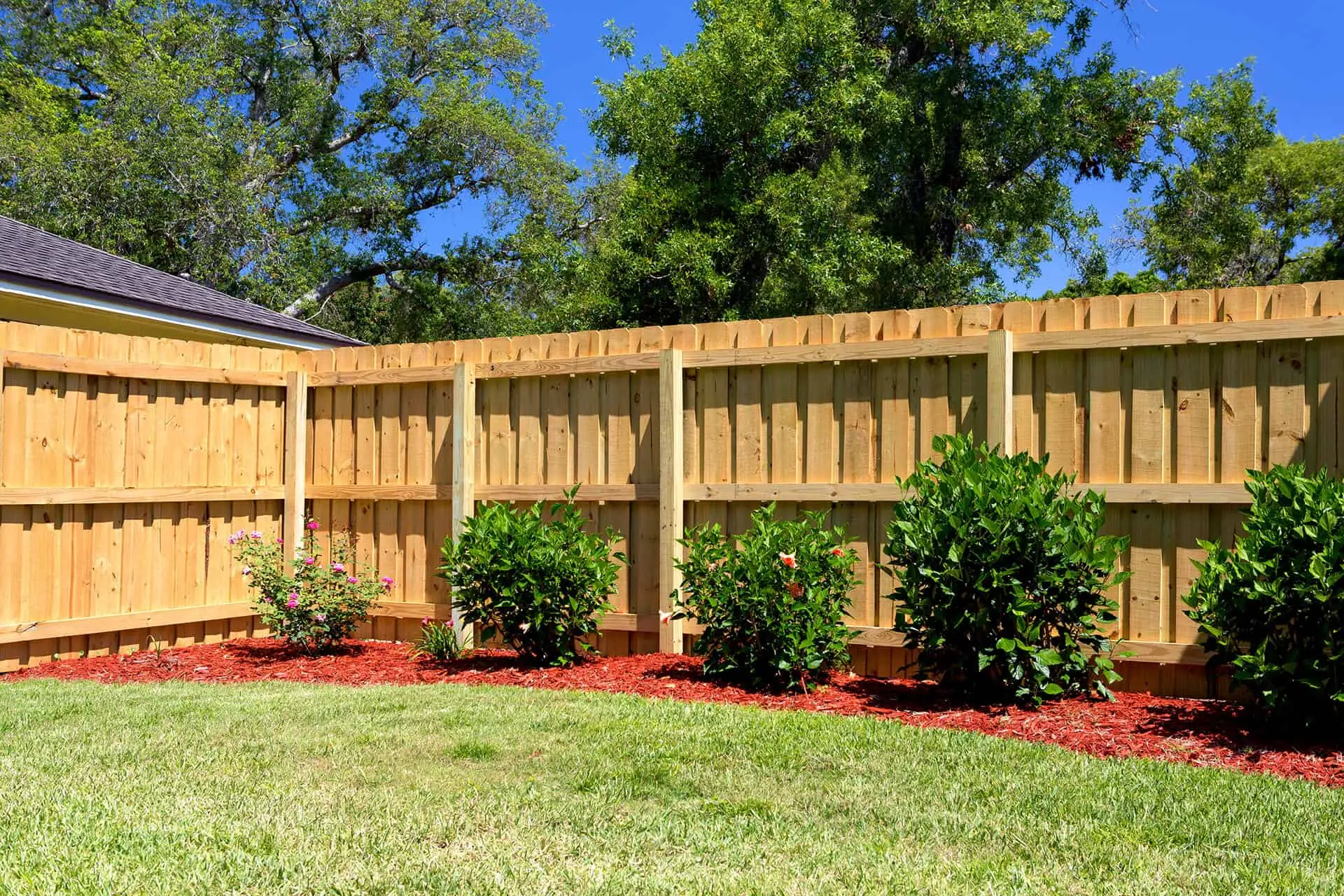

Good things are worth waiting for. From a college diploma, to a special birthday present, to an engagement ring, there are certain things in life that you appreciate more when you wait for the beautiful end result. The same applies for the new wood fence you just installed. Before you check your new wood fence off of your bucket list, you need to stain or seal it.
Wood fences are traditionally beautiful, and they can be a significant financial investment in the value of your home and property. They do, however, require staining or sealing in order to enhance their beauty and to ensure their life span. Wood may either swell when it’s wet or contract when it’s dry, so that constant swelling and contracting action can cause cracks and damage to your beautiful new wood fence. If the wood is not properly treated, the sun’s damaging UV rays can also create problems such as fading and warping. Further, the wood can become subject to mold, rot, and decay.
The length of time to wait before staining or sealing your new wood fence can depend on the type of wood, the time of year, and the climate of your geographic area. If you installed a pressure-treated pine fence, you’ll need to wait until the wood is completely dry before staining or sealing it. If the wood is not dry when you stain or seal the fence, the treatment will not adhere properly to the wood. If you installed a cedar fence, you can usually stain or seal your fence right away without waiting. In fact, if you wait too long, it may weather too quickly and you’ll have to sand it or wash it with a special cleaner in order to proceed to stain or seal it.
There are some general guidelines to follow when deciding how long to wait before treating your new wood fence. Consider the type of wood, and then wait the proper amount of time (usually anywhere between 1 and 6 months) before staining or sealing your fence. This will allow it to sufficiently weather and to dry or cure. If you live in an area with less rain than most, or if your area is experiencing a dry spell, you may not need to wait as long.
To test your new wood fence for appropriate dryness, simply place a bit of water on the surface boards. If the water beads up, you’ll need to wait and check it again later. If the water seeps into the wood, the wood is suitably dry and ready to be stained or sealed. Another option is to check it with a moisture meter. You may want to power-wash or sand your fence beforehand to properly prepare it to receive final treatment. Then, when it’s clean and dry, use a weatherproof stain or sealant with a manufacturer’s warranty to be sure you are protected from any problems.
Hire your local, trusted professional installer Superior Fence & Rail to help you with these nuances. We have over 4,000 customer 5-star reviews and a 94% approval rating from sites like Angie’s List, Home Advisor and the BBB (Better Business Bureau). With over 20 years of experience installing fences, we purchase over 10 million pounds of fence and install over 2 million feet of fence each year in 100+ locations across the Southeast. In this time of Coronavirus pandemic, we offer “No Contact” quotes and installation because you have enough things to worry about. Call Superior Fence & Rail today and let us help you with your wood fence installation, from concept to final treatment.
Great Fences Make Great Neighbors!
Your Superior Fence and Rail service team is standing by! Get a fence installation quote today!